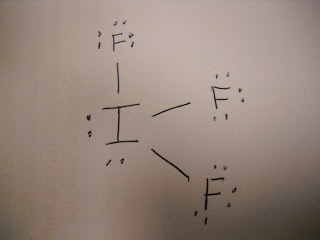Materials
Modeling pieces
Periodic Table
Procedure
Grab the right piece that corresponds with the molecules and put the correct amount of bonds to it and all the other molecules. Draw a three dimensional picture of the elements.
















Conclusion
This lab was very informative.


